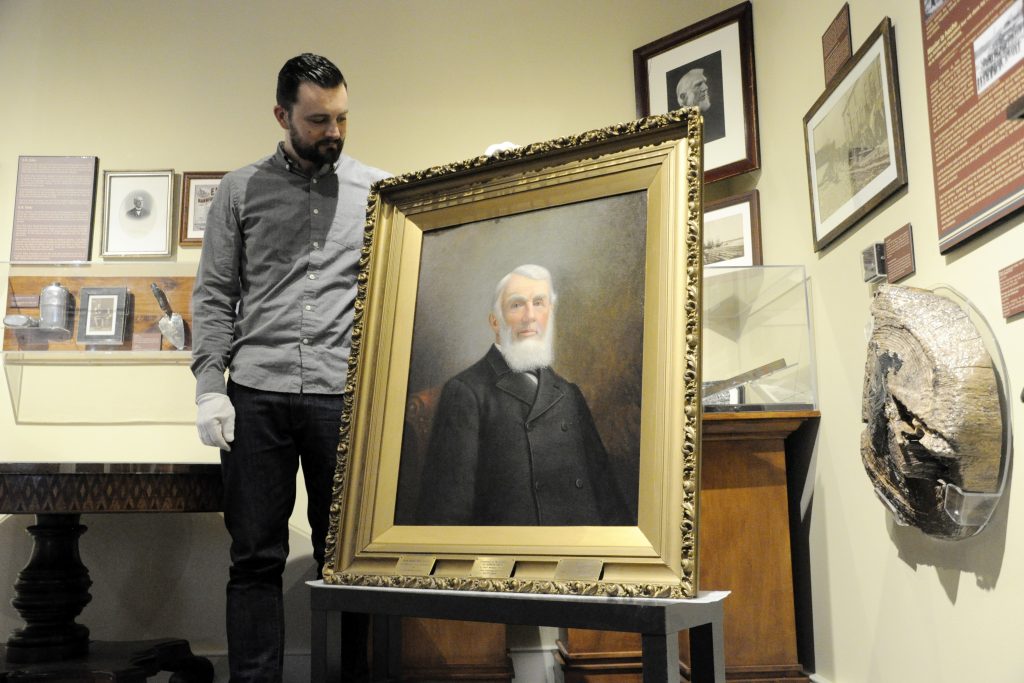Museum acquires portrait of lumber tycoon
By Santana Bellantoni
The Bytown Museum has acquired a portrait of John Rudolphus Booth, the legendary lumber baron described by Mackenzie King as “one of the fathers of Canada.”
Booth had a successful lumber business that supplied wood for the original Parliament Buildings as well as the Lusitania ocean liner.
He also built and owned the Canada Atlantic Railway, which helped to extract logs and export his lumber to the United States and Europe.
“It was the largest railway in North America owned by a single person,” said David Jeanes, President of Heritage Ottawa.
Booth had to decide between his railroad and lumber businesses when financial losses from a fire in April 1900 destroyed some of his sawmills in Hull, as well as his mansion on LeBreton Flats, explained Jeanes.
“I think his first love was lumber and probably lumber was still more profitable than running a railway,” said Jeanes.
Booth Street in Ottawa is named after him. Booth died in December 1925 at age 98, and is buried at Beechwood Cemetery in Ottawa. He had a wife, Rosalinda Cooke, and eight children, five of whom he outlived.
The artist of the portrait, likely painted between 1890 and 1910, is unknown.
Howard Smith, a retired accountant from Booth’s lumber company, donated the painting to Domtar (a pulp and paper company) after his retirement in 1964, Domtar then donated it to the museum last spring.
The portrait was restored and repaired by Legris Conservation.
Grant Vogl, the museum’s collections and exhibitions manager, said that in a 2014 exhibit about the First World War, some families that contacted him said they were related to people in the biographies displayed, and had artifacts and stories to share with the museum.
“Once it goes on display and more people see it, things can come to light that way, too,” said Vogl.
Canada is celebrating its 150th year as the Bytown Museum celebrates its centennial.
“This is going to be a huge, huge year for us,” said Vogl. Celebrations begin with the opening of their new exhibition a Century of Community on Feb. 3.
“Being the museum that tells the story of the capital city of Canada is a great tie in.”
“I think this is the greatest country in the world and I haven’t changed that thought in a long time,” said John Rowley Booth, Booth’s great-grandson.
Booth thinks it’s important for people to know about the history of their country and the history of their city.
“It really does get back to, if you don’t know the history, you are likely to make the same mistakes again.”
Booth said his great-grandfather started his railway business in his in his 70s.
“You know, people with that kind of vision we need to not put on a pedestal, but learn from and admire and say, ‘OK, now how can we be better, how can we do even better than that.’ ”

